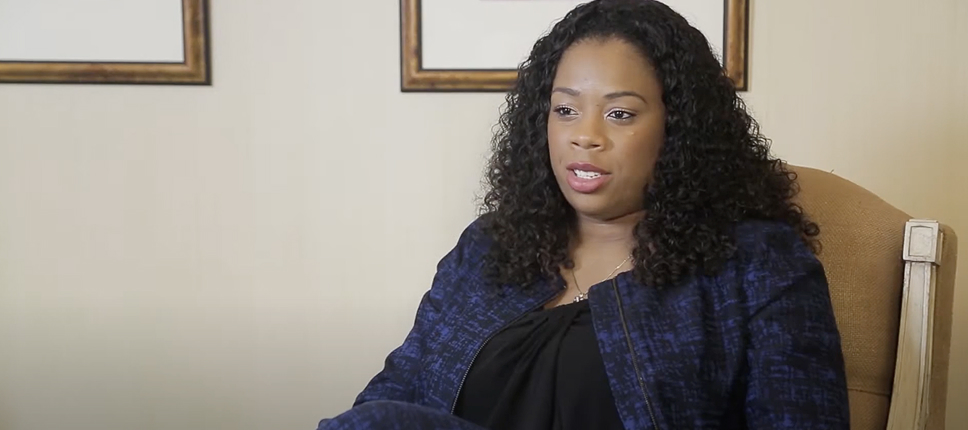Appearing On:
















Serious injuries deserve experienced attorneys
 It should come as no surprise that most DC injury cases` require a trial by jury, after all, it is written into the sixth amendment of our very own United States Constitution. We grow up knowing that at some point in our lives we may have to spend time in a courtroom, deliberating on a case so that everyone on trial can have access to an impartial set of jurors. But how do you know what to do once you’re there? If you have already done your jury time, you know very well that the judge will issue a set of guidelines called the jury instruction. The jury instruction is intended to provide rules to follow so that the jurors can make their final decisions in the most knowledgeable and just way.
It should come as no surprise that most DC injury cases` require a trial by jury, after all, it is written into the sixth amendment of our very own United States Constitution. We grow up knowing that at some point in our lives we may have to spend time in a courtroom, deliberating on a case so that everyone on trial can have access to an impartial set of jurors. But how do you know what to do once you’re there? If you have already done your jury time, you know very well that the judge will issue a set of guidelines called the jury instruction. The jury instruction is intended to provide rules to follow so that the jurors can make their final decisions in the most knowledgeable and just way.
Take a look at the below DC injury case jury instruction on inadmissible and stricken evidence from a Washington D.C. civil court.
Inadmissible and Stricken Evidence (D.C. Std. Civ. Jury Instr. No. 2-5)
The lawyers in this case sometimes objected when the other side asked a question, made an argument, or offered evidence that the objecting lawyer believed was not proper. Objections are not evidence. You must not hold such objections against the lawyer who made them or the party he or she represents. It is the lawyer’s responsibility to object to evidence that he or she believes is not admissible.
If, during the course of the trial, I sustained an objection to a lawyer’s question, then you should ignore the answer and must not guess about what the answer would have been. If, after a witness answered a question, I ruled that the answer should be stricken, then you should ignore both the question and the answer, and they should play no part in your deliberations.
[Similarly, if I sustained an objection to an exhibit, then you should ignore the exhibit and it should play no part in your deliberations.]
What is the jury instruction actually saying?
A lot of the time, despite its purpose to clarify trial proceedings, the jury instruction can be confusing, regardless of whether they are in an DC auto accident or a Virginia slip and fall case. For the majority of Americans who do not attend law school or have virtually no background when it comes to law, the language of the jury instruction can seem vague, complicated, and unfamiliar. Don’t worry, we get it. Let’s break this one down.
Essentially, this jury instruction is guiding jurors on what they shouldn’t consider as evidence. After all, any decisions you make as a juror should be grounded in the evidence, and only the evidence. Most of the time, the evidence will take place as sworn testimony, or exhibits that are admissible (in other words, the exhibits that the court agrees can be used).
What if the lawyers object to evidence (and what does objecting means, anyways)?
This jury instruction makes it very clear that lawyers — specifically DC injury attorneys — are supposed to object to evidence that they think is not proper, irrelevant, or does not have grounds to be introduced. The judge ultimately gets to decide to sustain (agree) or overrule (dismiss) their objection. If the judge sustains the objection, then whatever piece of evidence, question, or testimony they are objecting cannot be used to make your final decision. However, if they overrule the objection, you may use whatever was being objected to as grounds to make your final decision.
Important thing to remember: objecting is simply an attorney’s formal protest against what they believe is improper evidence. You should not hold that against them or the party they are representing, even if it’s something as serious as a DC wrongful death case.
It is ultimately up to the judge to decide whether or not something is improper, and thus he/she will make the final decision in that regard.
What is an example of evidence that could be deemed inadmissible?
Think about a personal injury case. Say there is a car crash, where one driver hit another driver. The driver who was hit suffered from severe whiplash and a gash on the head from the impact, so they decide to sue for compensation.
Now let’s just say that the driver who caused the collision has a history of driving under the influence. The injured driver’s attorney may want to bring that into court as evidence. This would likely get stricken from evidence and deemed inadmissible because the judge may not want it to influence the jury’s decision on this case.
After all, most evidence brought into a case should be relevant to the case, not cases of the past. While opposing DC DUI lawyers may try to dig up dirt — so to speak — from the past, an attorney who is on their game will quickly object to it on the grounds of it being irrelevant and improper.
Past evidence of a DUI does not mean the driver was drunk, nor does it mean the reason for the collision was a result of alcohol.
What’s the big takeaway?
Here’s the big take away: don’t use any evidence that the judge deems inadmissible or improper in your final deliberations. Don’t hold attorney’s objections against them or the party they represent. Lastly, if evidence is objected to but the judge overrules the objection, continue to use that evidence in your final decisions.
Most importantly, listen to the judge. He/She will be an expert in the DC injury cases and know what can and cannot be used in court.
Please do not rely on any above statements as legal advice. You should always seek the advice of a licensed lawyer in order to assist you.
Personal Injury Attorneys In:
Washington DC | Maryland | Virginia
“Cohen & Cohen did a great job at recovering a good amount of money for me after my accident. Siri was super informative & responsive. Overall I had a great experience using this firm & they will be my first call if I am ever in an accident again.”
– Charles M.
 Personal Injury Accident
Personal Injury Accident
“I had a very positive experience with Cohen & Cohen and I highly recommend them to anyone who needs their services.”
– John G.
 Tractor Trailer vs Car
Tractor Trailer vs Car
“I would highly recommend Cohen & Cohen. They were awesome on my case. Cohen & Cohen had my best interest at heart at all times.”
– Morgan L.
 Personal Injury Accident
Personal Injury Accident
“My experience at Cohen & Cohen has been great from the beginning until the very end when my case was closed…I would definitely recommend them to family, friends or anyone that has a case with a personal injury accident.”
– Maria M.
Reviews
From Our Valued Clients
Cohen & Cohen has an impeccable client satisfaction rating with hundreds of 5-star reviews. We are among the best-rated firms in D.C., Virginia, and Maryland.

Best Personal Injury Lawyer in DC








Cohen & Cohen Has Been Featured On


















